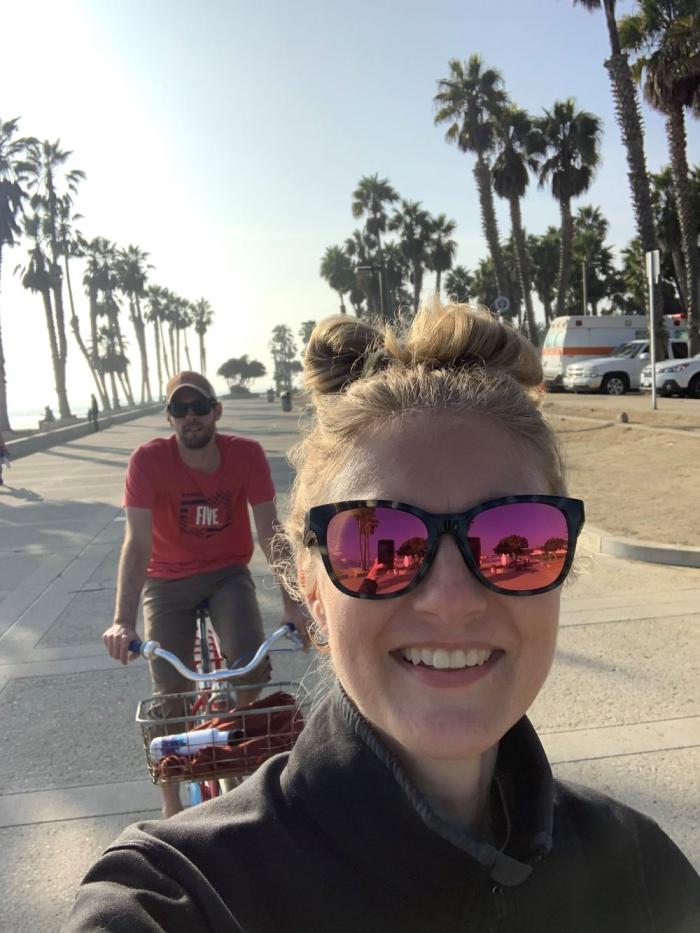Meet Kate Taft, Denver Water sustainability expert
Editor’s note: Sustainability is at the heart of everything Denver Water does. The utility has promoted and adopted sustainable practices over the more than 100 years it has served Denver, implementing a formal Sustainability Plan in 2018 and the updated plan that runs from 2021 to 2025.
For many, “living sustainably” can feel overwhelming. Where does one start? What’s the “best” way to do it? And how important are individual actions?
For answers, we turned to Denver Water’s sustainability experts, who spend every day working to make the utility’s operations more sustainable for the 1.5 million people across the Denver-metro area it delivers clean, safe drinking water to every day.
Meet Kate Taft, Denver Water’s manager of sustainability.
What three sustainable choices have you made in your daily life?
- Less is more in our house.
When I want to buy something, my partner asks me “What does this replace?” He is a much better minimalist than I am, but that question reminds me that life is about experiences and not things. Things break. They end up in a landfill. Learning to enjoy having less is such a benefit to one’s life (and bank account).
- I’ve tried for decades to cut back on the amount of meat and dairy in my diet.
It was an ethical thing as a child. My friends and family had 4H animals, ranches, dairies and everyone hunted and fished. I was immersed in the raising and selling of animals and the butchering of game. And this can all be done humanely and with respect and care.
I have the utmost admiration for those who do the right thing in sourcing their diet. But it was hard for my heart and head to witness as a child. As I got older and learned about factory farming, and effects on the environment, my interest in plant-based diets and responsible agriculture grew.
- I also try to keep my spaces free of chemicals that aren’t necessary.
I replace cleaning and personal care products with nontoxic options as we use them up. I don’t use synthetic chemical fertilizers and pesticides on my outside spaces. I know that it helps our health and the ecosystems that are downstream.
Any tips on how one can get started “living sustainably?”
There are so many ways to make a difference, so just starting is the place to start.
- Make a list.
- Then commit to adopting one new habit or lifestyle change each month, or each year.
Put reusable bags in your trunk and commit to walking back out to your car if you forget them. Make the new habit of taking to-go containers to restaurants an acceptable option. Focus on a new fair trade item at the grocery store each month (chocolate, sugar, bananas, flowers, etc.).
And celebrate your efforts and the changes! Recognizing all the things that you are doing is how you maintain motivation to continue making changes!
Working toward a sustainable future touches many things at Denver Water, read more about these efforts.
In your expert opinion, what do you think makes a difference?
- Focusing on what you are purchasing.
Consumers have the control. If we want a better product, an item with a longer life span or replaceable parts, or packaging that doesn’t include plastic, we have to put our money where our mouth is.
We have to seek out and spend our dollars on the products and manufacturers that are creating less waste and not selling us planned obsolescence.
What was the easiest/hardest thing for you to do to be sustainable?
- Easiest: Programming the thermostat to run the HVAC less and wearing more layers in the winter.
(Although my partner would disagree just based on the number of times he hears “I’m cold.”)
I treated myself to a couple of cotton throw blankets that I use at my desk and on the couches — and it helps. I also shop local and organic when I can, even if Amazon would be easier and cheaper.
- Most difficult: Trying to minimize emissions from travel. And reducing my dairy consumption, specifically cheese!
I fail at both. All the time.
What do water-wise gardens look like? These customers planted one.
What else should I remember, or think about, as I start this journey?
- Make it fun!
Changing one’s lifestyle and bettering the planet doesn’t have to be a drag. Choose a new hobby that excites you!
Have you always wanted to do more bicycle riding, gardening, baking, sustainable coffee or wine connoisseur-ing? Now is the time!
Make “meatless Monday” into an opportunity to try out an amazing new cuisine every week. Having a healthy and sustainable lifestyle is a shift in perspective, and it can make your day-to-day more enjoyable as well.



